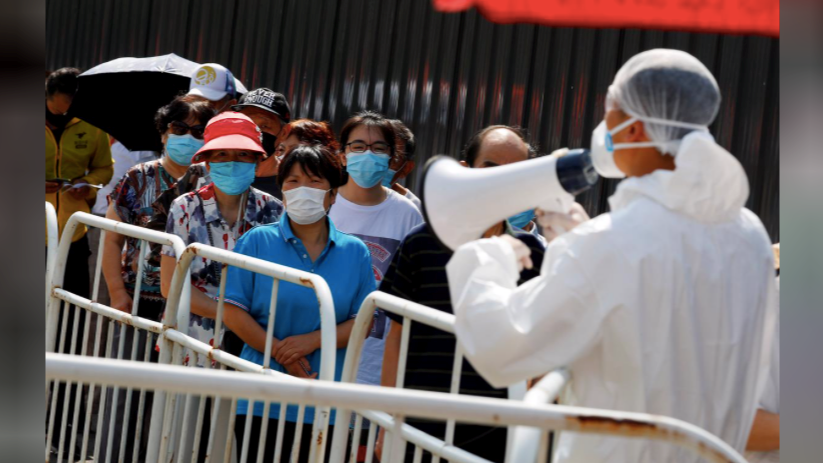As coronavirus continues to wreak havoc around the globe, Beijing had, until recently, returned to a comparative bubble of normality. With no new cases in almost two months, prevention measures had been relaxed, meaning schools and businesses could tentatively reopen and people could travel to and from the Chinese capital. That was until the city's first case in 56 days was reported on June 11, sparking fears of a second wave of the coronavirus that could potentially affect the whole country.

People line up to receive nucleic acid tests at a temporary testing site after a new outbreak of the coronavirus disease (COVID-19) in Beijing, China June 30, 2020. /Reuters
People line up to receive nucleic acid tests at a temporary testing site after a new outbreak of the coronavirus disease (COVID-19) in Beijing, China June 30, 2020. /Reuters
The first cluster of new cases was linked to the Xinfadi wholesale market in the southwest of Beijing, which supplies around 80 percent of the city's fresh fruit and vegetables. Fearing a repeat of Wuhan, Beijing put in new, localized measures designed to avoid a citywide lockdown.
After only just re-opening, schools returned to online classes. Travel restrictions and quarantine measures were put back in place, companies were encouraged to allow employees to work from home and museums and parks further limited capacity.
A number of communities have been closed down in districts labelled high or medium risk, with food and other necessities being delivered by community staffs. Across the city, residents, used to months of temperature checks, mandatory masks and entry restrictions, continue to respect the measures, since they can still move around with relative freedom.
A main reason why Beijing has not had to implement a city-wide lockdown since the new cases were reported, is that the local government quickly mobilized mass testing to pinpoint the high-risk areas. Home to over 21 million residents, Beijing tested 2.95 million people in the first ten days following the latest outbreak. It has since entered a fast-track testing stage, and as of June 28, over 7.6 million Beijingers had taken nucleic acid tests. Hospital tests have been made cheaper, too, meaning that people can more easily afford to pay for themselves rather than waiting for their community to be mass-tested.
Whereas restaurants and most businesses were completely shut down in February to stop the spread of the virus, Beijing has this time implemented a street by street system, closing communities or roads where an infected person lives or has been, so that all those inside the area can be tested. Restaurants have been temporarily closed as staff were tested en masse, ahead of getting back to work later, once their results turn out negative. Delivery drivers were next, with one driver testing positive, quickly highlighting his delivery zone as a potential risk. 100,000 kuaidi package delivery drivers have also been tested in Beijing so far, all testing negative.
These new initiatives have caused less widespread disruption, compared with the original outbreak, while apparently succeeding in bringing the new wave under control in around two weeks. The fall in the number of new cases this week offers hope to those living in Beijing and to the rest of the world as well, that life may be able to carry on relatively normally while we wait for a vaccine.